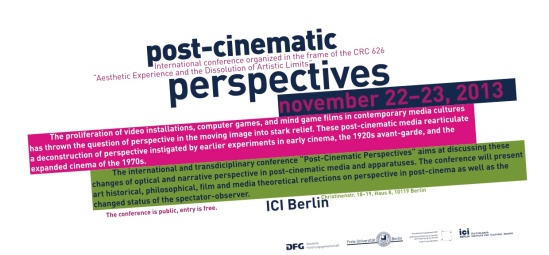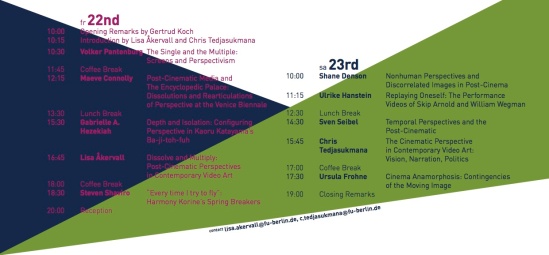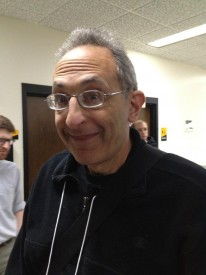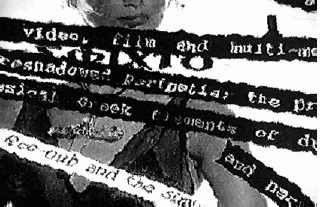On November 22-23, 2013, I will be participating in the conference “Post-Cinematic Perspectives,” which is being organized by Lisa Åkervall and Chris Tedjasukmana at the Freie Universität Berlin. There’s a great line-up, as you’ll see on the conference program above. I look forward to seeing Steven Shaviro again (and hearing his talk on Spring Breakers), and to meeting all the other speakers. My talk, on the morning of the 23rd, is entitled “Nonhuman Perspectives and Discorrelated Images in Post-Cinema.” The conference is open to the public, and attendance is free.
Tag: chaos cinema
Digital Film, Chaos Cinema, Post-Cinematic Affect: Thinking 21st Century Motion Pictures
Here’s the course description for a graduate-level course I’ll be teaching in the winter semester (October 2013 – February 2014) — a PDF of the full syllabus is embedded above:
Digital Film, Chaos Cinema, Post-Cinematic Affect: Thinking 21st Century Motion Pictures
Instructor: Shane Denson
Course Description:
In this seminar, we will try to come to terms with twenty-first century motion pictures by thinking through a variety of concepts and theoretical approaches designed to explain their relations and differences from the cinema of the previous century. We will consider the impact of digital technologies on film, think about the cultural contexts and aesthetic practices of contemporary motion pictures, and try to understand the experiential dimensions of spectatorship in today’s altered viewing conditions. In addition to preparing weekly readings, students will be expected to view a variety of films prior to each class meeting.
Course Themes and Objectives:
In this course, we set out from the apparent “chaos” that contemporary cinema often presents to us: the seemingly incoherent and unmotivated camerawork and editing, for example, by which many action films of the twenty-first century mark their departure from the “classical” norms of Hollywood-style narration and formal construction. From here, we seek to make sense more generally of cinema’s transformation in terms of new technologies and techniques (e.g. digital imaging processes, nonlinear editing, and attendant editing styles), in terms of new modes of cinematic distribution and reception (e.g. DVD, Blu-Ray, and streaming services, HD TVs, smartphones, and tablet computers, but also IMAX 3-D and similar transformations of the big screen), in terms of non-classical narrative styles (e.g. recursive, database-like, non-linear, and even non-sequitur forms of storytelling), and in terms of broader phenomenological and environmental shifts that inform our experience, our embodiment, and our subjectivity in the digital era.
Several key concepts will help to orient our thinking about twenty-first century cinema and its relation to earlier cinematic modes. The first is “chaos cinema,” a term which Matthias Stork popularized in a compelling set of video essays focused particularly on recent action cinema; beyond this context, however, Stork’s notion of “chaos” resonates with the feelings and fears of many critics and theorists in the face of digital-era cinema. This broader perception of chaos is sometimes traced back to the digital unmooring of images from the indexical referents to which photographic films remained tied; on this basis, the somewhat oxymoronic term “digital film” is often linked to an even more unsettling, because more basic, sense of chaos: according to some critics, the digital (and the moving images it produces and supports) is correlated with a sweeping transformation of human society and subjectivity itself. On the other hand, though, not all critics are similarly alarmed by digital-era chaos. David Bordwell’s concept of “intensified continuity” effectively denies the radical stylistic break announced in Stork’s analysis; Bordwell sees the newer films as perhaps faster and even more hectic than classical Hollywood fare, but basically constructed according to principles of classical continuity – just intensified. By way of contrast, Steven Shaviro’s notion of “post-continuity” – developed in the context of his analysis of “post-cinematic affect” – provides another view of contemporary moving image culture, one which links formal and aesthetic transformations not only with new technologies but also with broader social, cultural, and economic changes underway right now.
As we think through these and related concepts, we will engage a variety of recent movies from formal, phenomenological, affective, cultural, and environmental perspectives. We will seek to understand whether a radical change has taken place in recent cinema, to assess what its significance might be, and in this way begin to think through the implications of and for our viewing habits in the twenty-first century.
You can find more of my syllabi here: http://uni-hannover.academia.edu/ShaneDenson
Required Reading: Shaviro on Melancholia
I’m not teaching any courses right now, but if I were then Steven Shaviro’s “MELANCHOLIA, or the Romantic Anti-Sublime” would definitely be required reading! This is an important essay, and the new open-access journal in which it appears, Sequence: Serial Studies in Media, Film, and Music, is sure to establish itself as an important site of media research. Founded and co-edited by Catherine Grant (of Film Studies for Free fame), the peer-reviewed journal responds to the medial specificities of its digital environment in an innovative — but nevertheless quite “natural” — way: by structuring itself in terms of seriality. From the “About” page:
SEQUENCE will use its position outside of established academic publishing frameworks to work adaptively and responsively, using a sequential edited-collection format – its publication schedule set by its authors and readers, and their research and concerns. In other words, it will make an open-access virtue of its own low-fi, D.I.Y., modular blog format. It can only do this meaningfully, of course, because of the generous labour and research expertise of its authors, and of the editorial and advisory boards of its publisherREFRAME.
Each new scholarly SEQUENCE will begin with the publication of one valuable contribution to research in the fields of media, film or music – on a particular theme named in the issue title. But the editors of each individual SEQUENCE won’t necessarily know what the next in their series will be, or when exactly it will come. Each SEQUENCE could, theoretically, turn out to be ‘infinite’, or only as long as the first, self-contained contribution – a hopefully interesting and worthy, if possibly melancholic, kind of monograph.
In any case, each contribution to a SEQUENCE, and each evolving SEQUENCE as a whole, will go on to be published in a variety of electronic viewing and reading formats, with the web version only the first in a series of digital iterations.
Instead of regularity, we aim above all for spreadability and engagement. Readers will find out about new SEQUENCES, and new contributions and updates to existing SEQUENCES through the paraphernalia and pullulations of contemporary online serial publication: primarily, the project’s blog, its RSS feeds, and its Twitter and Facebook pages, and, hopefully, sharings on from those.
In this spirit, check out Shaviro’s excellent article, share it, and spread the word about this important new venue for online, peer-reviewed, open-access scholarship!
WALL-E vs. Chaos (Cinema)
Tonight was the last night of our film series, “Chaos Cinema?” Here are the notes for my presentation on WALL-E:
WALL-E vs. Chaos (Cinema)
Shane Denson, 19 July 2012
Not long ago, I argued for a reconceptualization of recent cinema in terms of the rise of what I called “discorrelated images”—images that announce a certain amount of autonomy from human perceptual consciousness and that therefore resist being yoked or, to speak in the terms of the speculative realists, “correlated” completely to the subject of classical phenomenology.
My argument, which took Michael Bay’s Transformers (2007) as its central case study, was directed against Matthias Stork’s intriguing but ultimately limited conception of “chaos cinema,” which tends to see the frenetic filmmaking of the type that Bay is known for as basically sloppy in its disregard for the rules of classical continuity editing. Following the lead of Steven Shaviro, with his conception of “post-continuity” as an aspect of a broader regime of “post-cinematic affect,” I argued that the breaks with continuity singled out by Stork as the hallmark of chaos cinema are in fact merely symptomatic of a much larger shift in our media culture—signs, in fact, of an uncertain transition that we are still undergoing and that concerns a major overhaul of the place of the human in the cosmos, of our affective interface with material reality, or of our sensorium as a historically conditioned aspect of our embodied contact with the environment.
Concretely, I argued that the “operational aesthetic” expressed or elicited in scenes of Transformers’ transformations demonstrate that there’s more at stake than a simple break with continuity; for these images need not involve any violation of the 180° rule, the 30° rule, or any other convention regulating the editing practices of classical Hollywood film. Clearly, the chase scenes highlighted by Stork do involve such violations, but it seems somewhat arbitrary to single out such phenomena as definitive of a style or even an entire era of cinema, while the transformation scenes are clearly the centerpiece visual spectacles of the Transformers films and must therefore be accorded a central position in the aesthetic appeal of these particular films (if not in the aesthetic appeal of post-millennial popular cinema as a whole).
Taken together, a very different image emerges: we find then not just continuity violations but a more general discorrelation of images from the spatial and temporal parameters of “normal” human subjectivity. The transformation scenes, with their incredibly detailed displays of minutely articulated and perfectly synchronized processes, embody a sort of information overload: they are too much for us to take in at once, too fast for our eyes or even our perceptual imaginations. This fact is of course related to the digital technologies that are responsible for their production; computational processing divorces images in their materiality from the hitherto reigning analogies between eye and camera. More centrally still, these images are severed from the historical correlation between the perceptual subject of vision and the medial apparatuses that cater to (and condition) that subjectivity. The result of discorrelation must indeed seem like “chaos,” because it signals a certain superfluousness of consciousness, a displacement of the constituted subject and of the properly human—a displacement that we feel today in the face of semi-autonomous finance markets and, crucially, the chaos of environmental change and catastrophe as well.
WALL-E, I want to suggest, displays an acute awareness of these displacements. Its very medium, digital animation, is implicated materially in the discorrelation of human perception, as it is in this medium that, following arguments made by Mark Hansen, the image ceases to be an object (of either a perceiving subject or of an apparatic analog medium) and instead becomes fully processual (both with respect to the microtemporal processes of its technical, i.e. computational, generation, and with respect to its microtemporal neural processing, which in bypassing conscious awareness must be regarded as a completely affective form of sensory reception). Digital animation is therefore the pinnacle of what, in an effort to further specify the conditions of contemporary cinema and to move beyond the simplifying label of “chaos” cinema, I would like to call “hyper-informatic cinema.”
This label is meant to highlight two related aspects of contemporary cinema, or of an important tendency in recent film: 1) Hyper-informatic cinema is based on a profusion of informatic (i.e. digital) technologies, both diegetic and non-diegetic—an overabundance of computers in the production of contemporary films (which rely heavily on CGI and digital compositing techniques), and of computational agencies in the films so produced (which feature robots, transformers, and cybernetically enhanced aliens, but also humans seeking to master or simply navigate the computational environments in which we already live today). 2) Such films are hyper-informatic in the sense I referenced above: they exploit scenarios of information overload, either as spectacle or as (at once narrative and affective) dilemma. In these scenarios, there is simply too much information, thrown at us far too fast for us to process it in full. The “intensification” of continuity that Bordwell speaks of can in large measure be traced back to this aspect of hyper-informatic speed, and the breakdowns that Stork labels “chaos” result from the mismatch between computational microtemporalities and the macrotemporality of the consciousnesses they challenge.
But rather than exacerbating the perceptual mismatch of digital discorrelation, WALL-E instead effects a reduction of informational content, without thereby denying its self-awareness of the fascinations of its informatic medium. There is a lack of talk, and a lack of speed, but there is no lack of visual spectacle and of inter-medial comparisons that highlight (and historicize) the film’s own digital substrate: thus, WALL-E is a fan of the film Hello, Dolly!, a relic of a bygone (human) era which he consumes through an assemblage of antiquated technologies, including cassette recorders, iPods, and magnifying glasses. WALL-E marks, indeed embodies, a discorrelation of the image from human perception, but the film need not flaunt it in the style of Michael Bay. Instead, WALL-E would seem to offer a measured response to it, one that places it in close connection to the “chaos” that characterizes not only our cinema at present but our estrangement from an environment marked by post-industrial carelessness, pollution, and e-waste. Reading the hopeful story of ecological recovery in medially self-reflexive terms, perhaps we could say that WALL-E’s quest to clean up the earth is less a battle to restore the human to a position of centrality, autonomy, and mastery over nature, as instead a far more limited, but also far less utopian, struggle to accept discorrelation and to effect a cinematic recalibration: an attunement of sensory capacities and images qua informatic processes.
Discorrelated Images: Chaos Cinema, Post-Cinematic Affect, and Speculative Realism
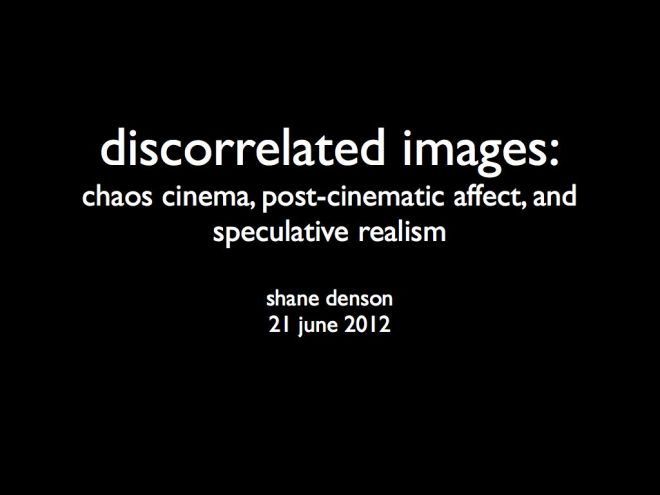
On the occasion of our “Chaos Cinema” film series, where the topic yesterday was Michael Bay’s Transformers (2007), I gave a short talk on the notion of “discorrelated images” — an idea that percolates (though is not named as such) in my dissertation, emerging through conversation with a number of thinkers, ideas, and images: Deleuze (and Guattari) on “affection images” and “faciality,” Henri Bergson on living (and other) “images,” Brian Massumi on affect and “passion,” Mark Hansen on the “digital facial image” and “the medium as environment for life,” and others, including Boris Karloff and the iconic image of Frankenstein’s monster. All of which are left out of the picture in yesterday’s talk — which was designed to set the stage for further thinking, to be suggestive rather than definitive, and thus serves more to raise questions than to answer them. In any case, I reproduce the text (and slides) here, in case anyone is interested:
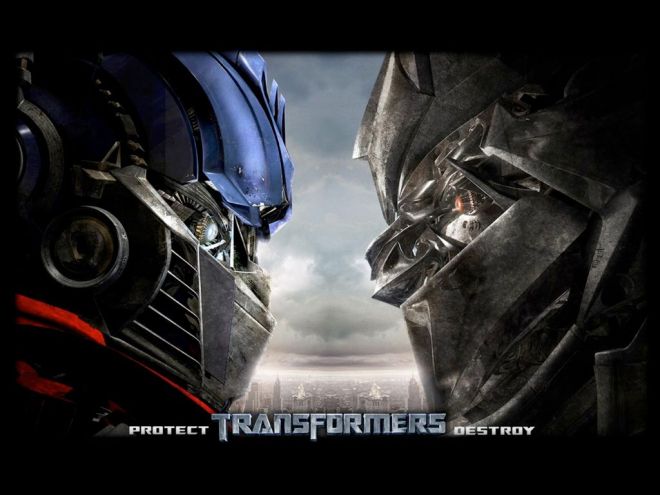
Michael Bay’s 2007 film Transformers can be seen as an interesting case of transmedial serialization in the context of what Henry Jenkins calls our “convergence culture” — interesting because, reversing the typical order of merchandising processes, Bay’s film and its sequels are part of a franchise that originates with (rather than giving rise to) a line of toys. Unlike Star Wars action figures, for example, which are extracted from narrative contexts and made available for supplementary play, Transformers are toys first, and only subsequently (though promptly) narrativized. These toys, first marketed in the US by Hasbro in 1984, but based on older Japanese toylines going by other names, spawned several comic-book series, Saturday-morning cartoons, an animated film, novelizations, video games implemented across a wide range of platforms, and the trilogy of films directed by Michael Bay with backing from Steven Spielberg.
Despite such rampant adaptation and narrativization, however, we shouldn’t lose sight of the toys, which continue to be marketed to kids today, nearly thirty years after they were first marketed to me and my elementary school friends: the toys themselves offer only the barest of narrative parameters (good guys vs. bad guys) for the generation of storified play scenarios. Transformers, in opposition to Star Wars figures, which always exist in some relation to preexistent stories, are not primarily interesting from a narrative point of view at all: Autobots and Decepticons are basically just two teams, and the play they generate need not be any more narratively complex than a soccer or football match (where tales are told, to be sure, but as a supplement to the ground rules and the moves made on their basis).

Instead, the basic attraction of Transformers is, as the name says, the operation of transformation. Transformers are therefore mechanisms first, and the attraction for children (mostly boys) growing up in the early 80s was to see how they worked. Transformers, in other words, are the perfect embodiments of an “operational aesthetic” in the original sense of the term, first introduced by Neil Harris to describe the attraction of P.T. Barnum’s showmanship against the background of nineteenth century freak shows, magic shows, World Expos, and popular exhibitions of the latest technologies. More recently, Jason Mittell has usefully employed the concept to explain the attraction of “narratively complex television,” but the operationality at issue here (i.e. in the case of the Transformers) is of a stubbornly non-narrative sort. Thus, consonant with a general trait of science-fiction film (with its narratively gratuitous displays of special effects, which often interrupt the story to show off the state of the art in visualization technologies), narrativizations of Transformers are inherently involved in competitions of interest: story vs. mechanism, diegesis vs. medium. The Transformers themselves, who are more interesting as mechanisms than as characters, are the crux of these alternations.
(On this basis we might say, riffing on Niklas Luhmann, that they embody an “operative difference between substrate and form” and thus themselves constitute the “media” of a flickering cross-medial serial proliferation. But that’s another story…)

Let me go back to the idea of convergence culture, which I’d like to connect with this operational mediality. It’s important to keep in mind that our convergence culture, in Jenkins’s terms, is enabled by a different type of convergence with which it remains in constant communication: viz. the specifically technological convergence of the digital. Is it stretching things to say that the original toys latched onto an early eight-bit era fascination with the way electronic machines could generate interactive play? In other words, they spoke to an interest in the way machines worked — as the basic object of interactive video games — and promoted fantasies of artificial intelligences and robotic agencies that would be a match for any human subject (or gamer).

In any case, Michael Bay’s Transformers, along with the film’s sequels, would not be possible without much more advanced digital technologies; the films know it, we know it, and the films know we know it, so the role of the digital is not hidden but foregrounded and positively flaunted in the films. Typically for a transitional era of media-technological change, which, it would seem, we are still going through with respect to the digitalization of cinema (and of life more broadly), there is a fascination with medial processes that the films hook into. The result is that attentions are split between diegesis and medium, story and spectacle. The Transformers serve as a convenient fulcrum point for such oscillations, thus capitalizing on the uncertain valencies of media change while connecting phenomenological dispersal with a story that in some ways speaks to a larger decentering of human perspectives and agencies in the face of convergence and computation processes — to a feeling of contingency about the human that is related in various ways to digital technologies.
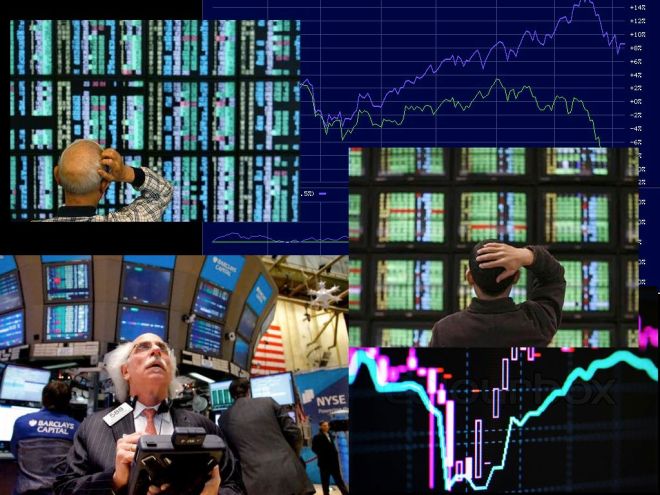
For example, there’s a sense of powerlessness with respect to digitally automated finance, which employs robotically operating algorithms to expedite the process and efficiency of transactions, splitting major operations into distributed micro-scale packet transfers that occur faster than the blink of an eye, and at truly sublime scales — both infinitesimally smaller and faster than human sensory ratios and with the potential to produce cataclysmically large results. The entire realm of human action, which exists in between these scales, is marginal at best: the machines originally meant to serve the interests of (some) humans end up serving only the algorithms of a source code — with respect to which, we are perhaps only bugs in the system. It is easy to extrapolate sci-fi fantasies: for example, the emergence of Skynet — or is it Stuxnet?
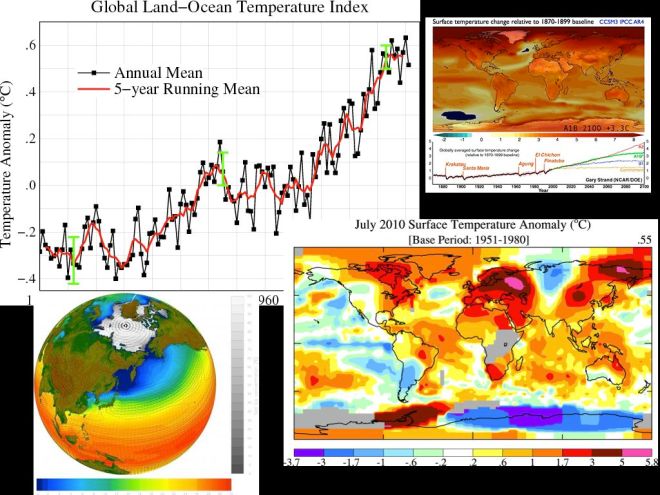
But the decentering of the human perspective through digital technology is taking place in much less fantastic manners, and in ways that do not support any kind of humans-first narratives of heroic reassertion: global warming, which is revealed to us through digital modeling simulations, points not towards our roles as victims of a pernicious technology of automation, but shows us to be the culprits in a crime the scale of which we cannot even begin to imagine. Categorically: we cannot imagine the scale, and this fact challenges us to rethink our notions of morality in ways that would at least attempt to account for all the agencies and ways of being that fall outside of narrowly human sense ratios, discourses, cultural constructions, senses of right and wrong, the true and the beautiful, the false and the ugly…. Through digital technologies, we have found ourselves in an impossible position: our technologies seem to want to live and act without us, and our world itself, ecologically speaking, would apparently be far better off without us. We are forced, in short, to try to think the world without us.
“Without us” can mean both “in our absence” or “beyond us” — outside our specific concerns, attachments, and modes of engagement with the world. The attempt to think, in this sense, “the world without us” characterizes the goal of “speculative realism,” a recent tendency in philosophy defined by its opposition to what Quentin Meillassoux calls “correlationism,” or the idea that reality is exhausted by our means of access to it. Against this notion, which correlates human thought and being on a metaphysical level, the speculative realists challenge us to think the world apart from our narrow view of it, to renounce an essentialism of the human perspective, and to escape to the “Great Outdoors.”
What does this have to do with Transformers and so-called “chaos cinema”? I’m trying to suggest something about the affective state, the structure of feeling, that produces and is (re)produced in and by our media culture today — a structure of feeling that Steven Shaviro calls “post-cinematic affect.” This broader context is largely ignored in Matthias Stork’s conception of “chaos cinema,” which is defined narrowly and technically, in terms of a break with classical continuity. These breaks do occur, and Stork has demonstrated their existence quite powerfully in his video essays, but they are only symptomatic of larger shifts. Shaviro has put forward a seemingly related notion of “post-continuity,” but he is careful to point out that continuity is not what’s centrally at stake. Post-cinematic affect is not served or expressed solely by breaking with principles of continuity editing; rather, continuity is in many instances simply beside the point in relation to a visceral awareness and communication of the affective quality of our historical moment of indeterminacy, contingency, and radical revision. The larger significance of a break with principles of classical continuity editing — rather than just sloppy filmmaking, as Stork sometimes seems to suggest, or quasi avant-garde radicalism — has instead to do with the correlation of continuity principles with the scales and ratios of human perception. Suture and engrossment in classical Hollywood works because those films structure themselves largely in accordance with the ways that a human being sees the world. (It goes without saying that this perceptual model is one that has as its touchstone a normative model of human embodiment, neurotypical cognitive functioning, and relatively unmarked racial, class, and gender types.) And while it has long been clear to feminist critics, among others, that the normative model of (unqualified, unmarked) humanity to which classical film speaks was in need of problematization, I would argue that the human itself has become a problem for us, and that “our” films have registered this in a variety of ways. The momentary breaks with continuity that Stork singles out as the defining features of chaos cinema are just one of the ways.
More generally, I suggest, we witness the rise of the discorrelated image: an image that problematizes, if not altogether escaping, the correlation of human thought and being. The teaser trailer for Transformers (also integrated into the film itself) uses nonhuman subjective shots — images seen through the eyes of a robot, the Mars rover Beagle 2 — to promote its story about an intelligent race of machines. In a somewhat different vein, The Hurt Locker opens with images mediated through the camera-eyes of a robot employed for defusing bombs from a distance. The Paranormal Activity series employs a variety of robotic or automated camera systems. Wall-E, Cars, and a host of other digital animation films are all about the perceptions, feelings, and affects of nonhuman machines. Of course, there’s nothing new about such representations, and they are highly anthropomorphic besides. But what if these are just primers, symptomatic indicators, or gentle nudges, perhaps, towards something else? (Significantly, both Jane Bennett, in the context of her notion of “vibrant matter,” and Ian Bogost, with regard to his project of “alien phenomenology,” have argued for the necessity of a “strategic anthropomorphism” in the service of a nonhuman turn.) In fact, what we find here is that the representational level in such films is coupled with, and points toward, an extra-diegetic fact about the films’ medial mode of existence: digital-era films, heavy with CGI and other computational artifacts, are themselves the products of radically nonhuman machines — machines that, unlike the movie camera, do not even share the common ground of optics with our eyes. Accordingly, the supposed “chaos” of “chaos cinema” is not about a break with continuity; rather, it’s about a break with human perception that materially conditions the cinema (and visual culture more broadly) of the early 21st century. Again, in Transformers, the process of transformation is the crux, the site where discorrelation is most prominently at stake as the object of an operational aesthetic. The spectacle of a Transformer transforming splits our attention between the story and its (digital) execution, between the diegesis and the medial conditions of its staging, which are in turn folded back into the diegesis so as to enhance and distribute a more general feeling of fascination or awe.
What do we see when a Transformer transforms? What we don’t see, necessarily, is a break with the principles of continuity editing. Instead, we witness a discorrelation of the image by other means: we register the way in which our desire to trace the operation of the machine is categorically outstripped by the technology of digital compositing, which animates the transformation by means of algorithmic processes operating on the scale of a micro-temporality that is infinitesimally smaller and faster than any human subject’s ability to process or even imagine it. These images, I contend, are the raison d’etre of the film itself. But they are not “for us,” except in the sense that they challenge us to think our contingency, to intuit or feel that contingency on the basis of our sensory inadequacy to the technical conditions of our environments. A hopeful story, complete with adolescent love interest and other minor concerns, counters this vision of our own obsolescence. But the discorrelated image of transformation is the aesthetic crux of the film, quite possibly the only thing worth watching it for, and perhaps even the bearer of a (probably unintentional) ethical injunction, beyond the rather flimsy human-centered narrative (and the clearly conservative politics, militarism, and apparent misogynism): the discorrelated image, in which the process of transformation can only be suggested to our lagging sensory apparatuses, challenges us performatively, by confronting us with an image of our own discorrelation; viscerally, it asks us to attune ourselves to an environment that is broader than our visual capture of it, faster than our ability to register it, and more or less indifferent to our concernful perception of it. Materially, medially, and ontologically true to the 1980s tagline, the discorrelated images of Michael Bay’s Transformers are indeed “More than meets the eye!”
Steven Shaviro on “Post-Continuity”: Film & TV Reading Group
Tomorrow (Wednesday, May 16, 2012, at 6:00 pm in room 615 of the Conti-Hochhaus), the Film & TV Reading Group will meet to discuss Steven Shaviro’s take on the “chaos cinema” debates (and his alternative idea of “post-continuity”). Felix Brinker will be moderating the discussion, which will center around a recent talk by Shaviro on the topic (which can be found on his blog, here: http://www.shaviro.com/Blog/?p=1034).
As usual, everyone is welcome to join us!
Chaos Cinema? A Film Series
(click on image for larger view)
“During the first decade of the 21st century, film style changed profoundly.”
This, at least, is the thesis put forward by Matthias Stork in a series of highly controversial video essays that have circulated recently on the Internet. According to Stork, “Contemporary blockbusters, particularly action movies, trade visual intelligibility for sensory overload, and the result is a film style marked by excess, exaggeration and overindulgence: chaos cinema.”
In a series of film screenings, we would like to engage critically with Stork’s notion of chaos cinema. We shall begin by viewing Stork’s video essays themselves, before moving on to some of the films he discusses and others that exemplify and/or challenge the paradigm of chaos cinema.
For those interested, here are some links to useful background and discussion:
First, Stork’s thesis must be seen against the background of David Bordwell’s notion of “intensified continuity,” which is seen to mark a change from the classical Hollywood style that dominated American cinema from around 1920 until (at least) the 1960s. Chaos cinema, according to Stork, goes further in effecting a radical break with continuity principles, whether classical or intensified.
Another important context is Steven Shaviro’s book Post-Cinematic Affect, which introduced the term “post-continuity.” (A Google Books preview can be found here, but note that approximately two-thirds of the book appeared in the open access journal Film-Philosophy under the title “Post-Cinematic Affect: On Grace Jones, Boarding Gate and Southland Tales“.) More recently, Shaviro has returned to the topic and reflected explicitly on Stork’s notion of chaos cinema in a talk given at the 2012 annual conference of the Society for Cinema and Media Studies, reprinted in full on his blog The Pinocchio Theory.
And here, finally, is the schedule of screenings (note that all screenings will be held in room 615 of the Conti-Hochhaus, at 6:00 pm):
April 26, 2012: “Chaos Cinema” (Matthias Stork, 2011)
May 24, 2012: Gladiator (Ridley Scott, 2000)
June 21, 2012: Transformers (Michael Bay, 2007)
July 5, 2012: Scott Pilgrim vs. the World (Edgar Wright, 2010)
July 19, 2012: WALL-E (Andrew Stanton, 2008)
Films will be shown in English original with subtitles where available. Screenings are open to all, so feel free to spread the word!
Shaviro’s Response
Following the great round of presentations and lively discussions, Steven Shaviro has now offered his concluding response, wrapping up the theme week on his book Post-Cinematic Affect at In Media Res. In related news, over at his blog The Pinocchio Theory, he’s also posted a text on “post-continuity,” framed by a response to Mattias Stork’s video essay “Chaos Cinema.” There’s still lots to think about here, and I’m sure the discussion is not over yet…
